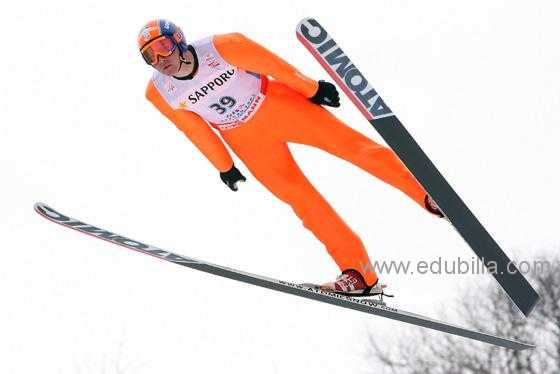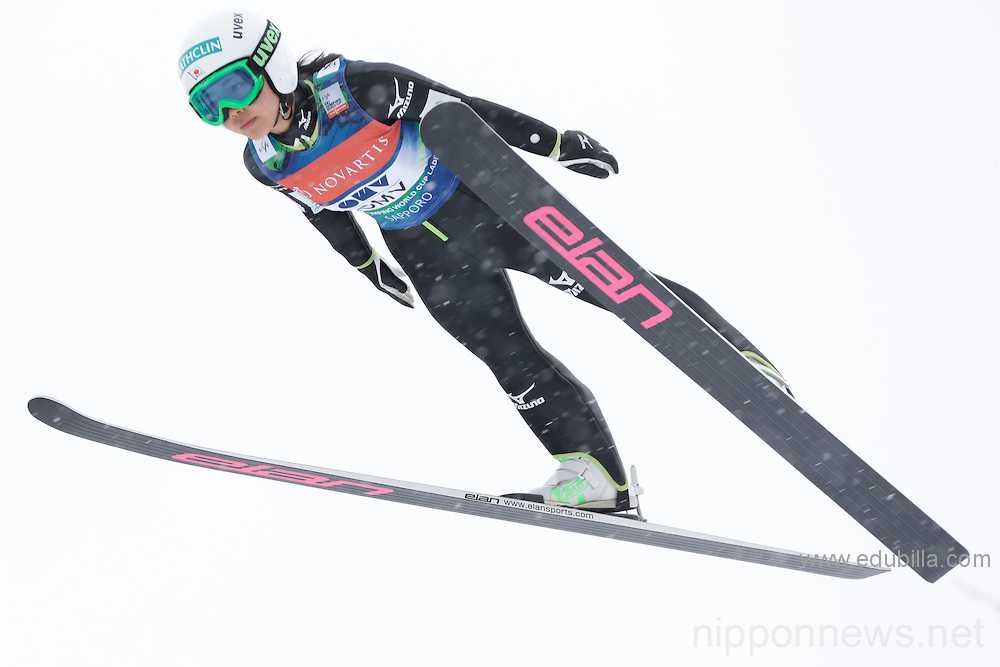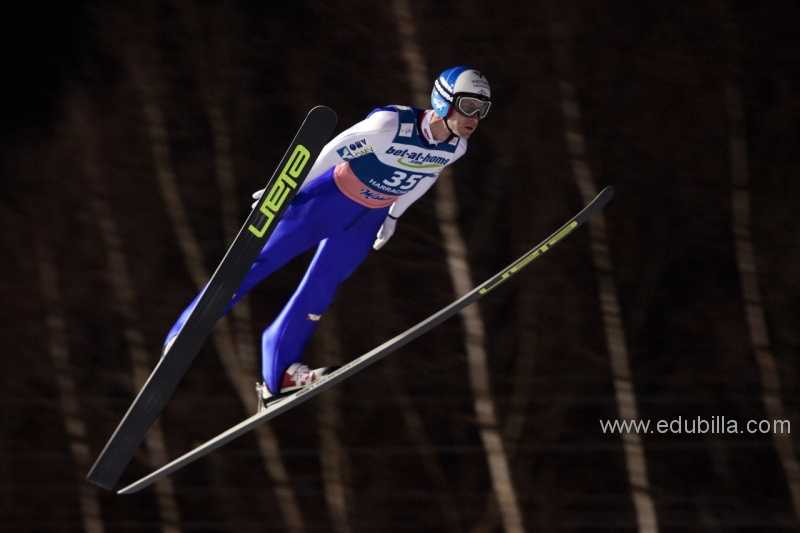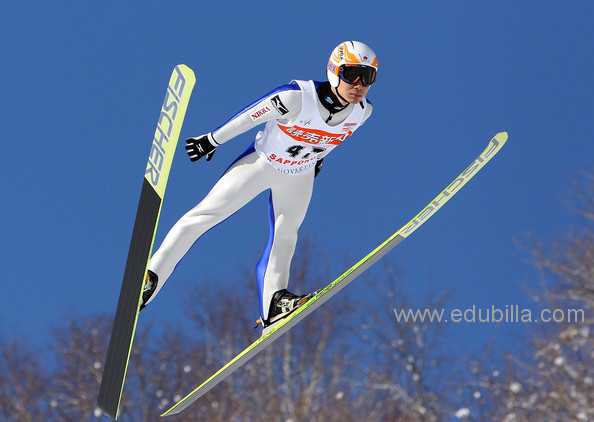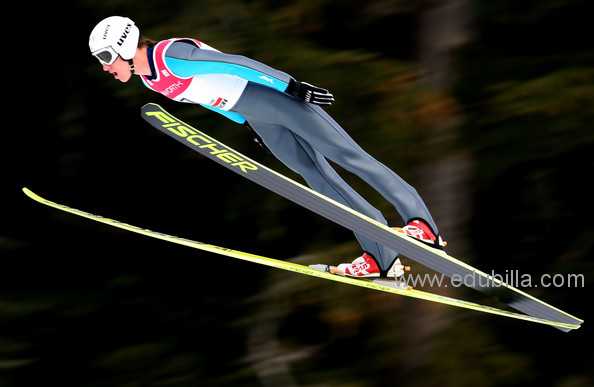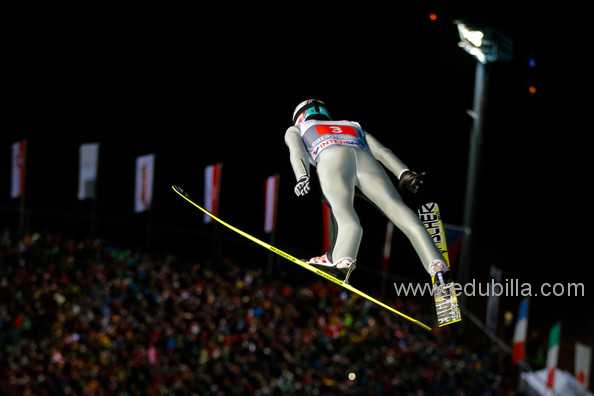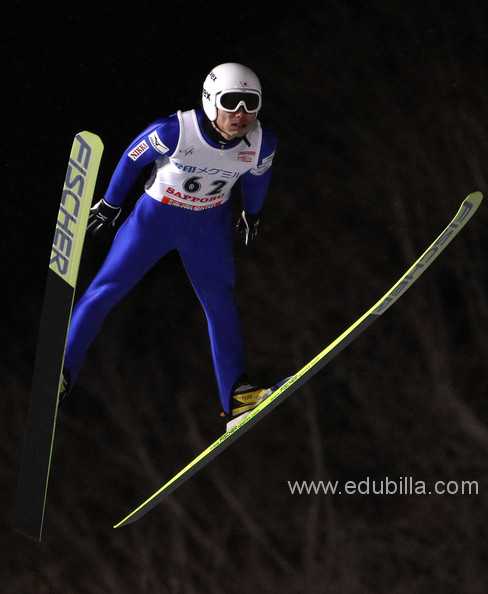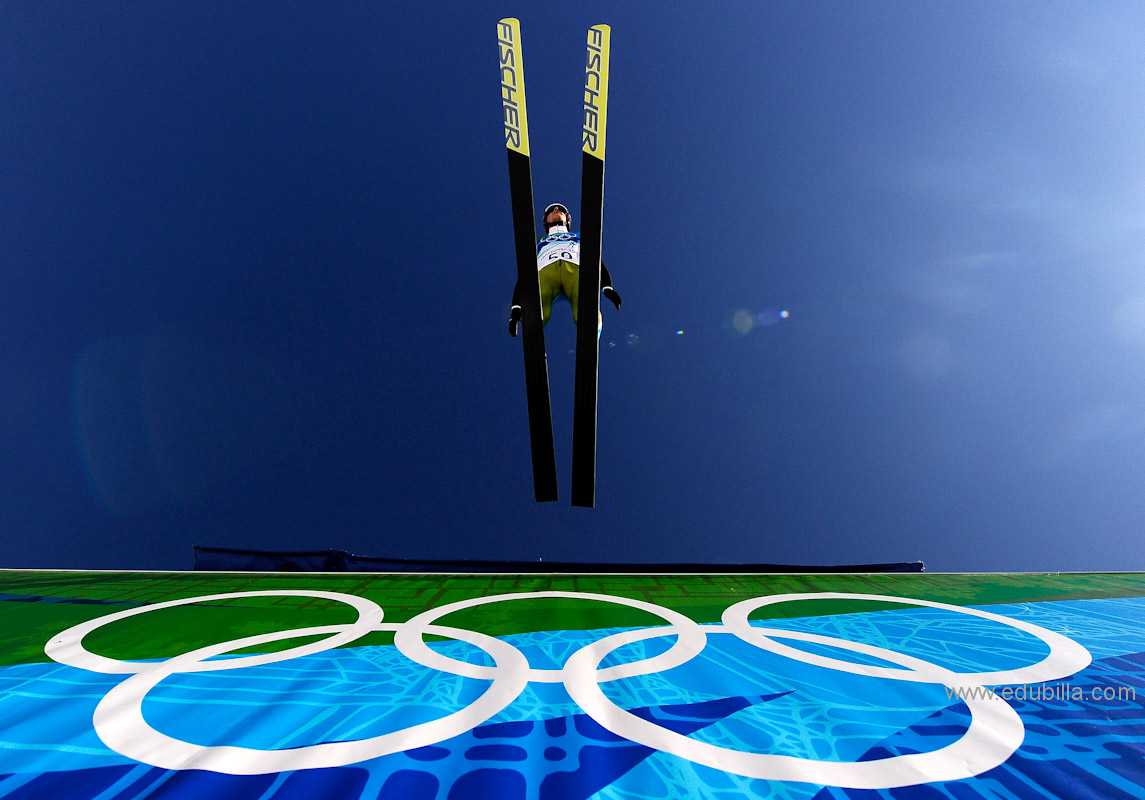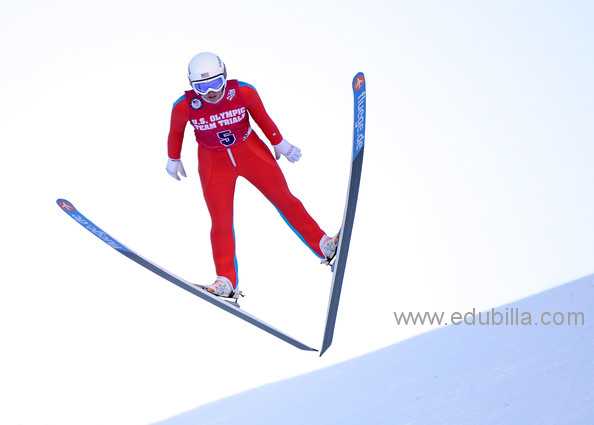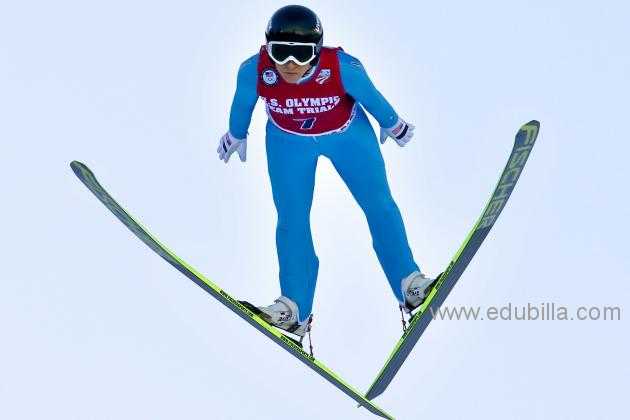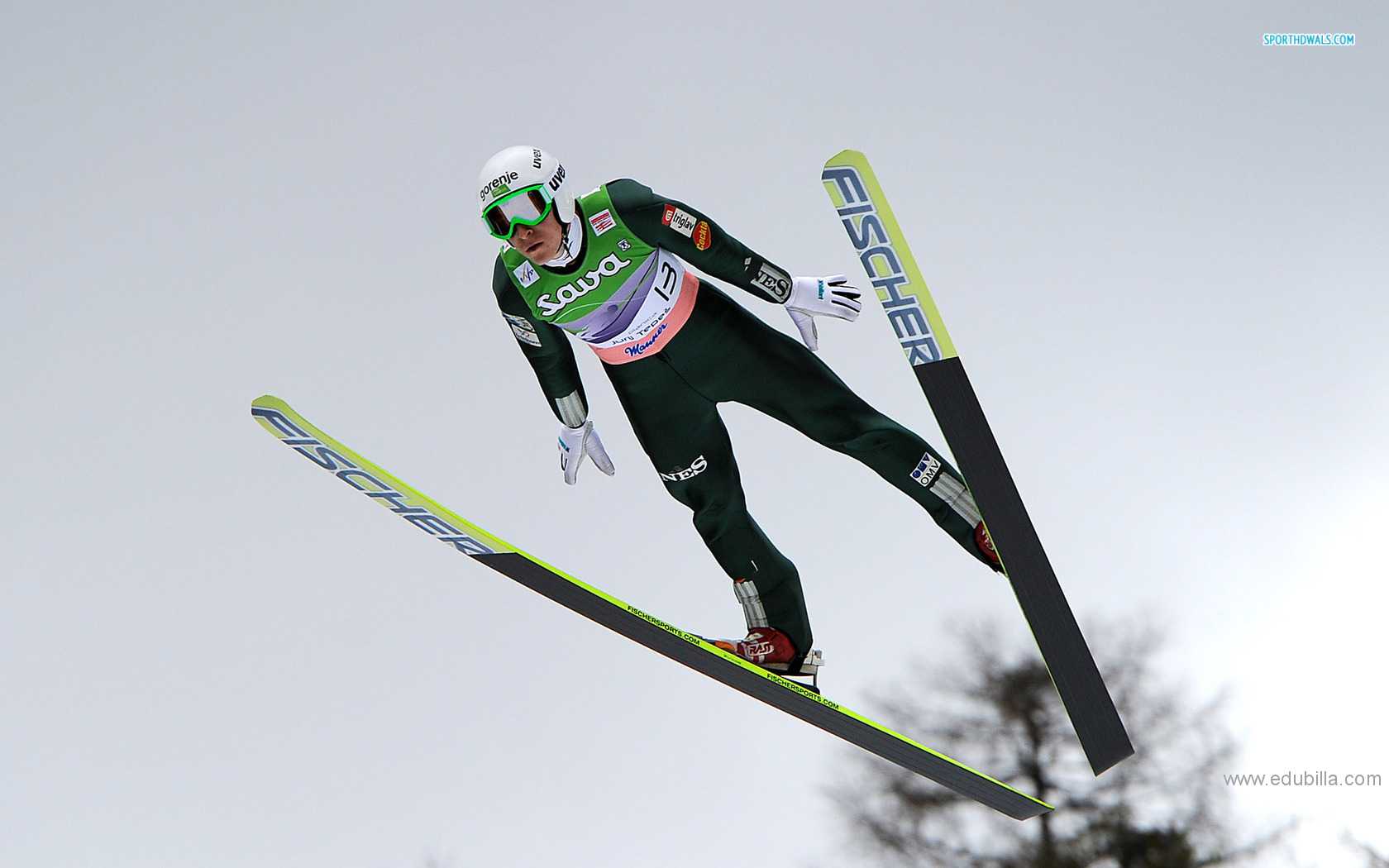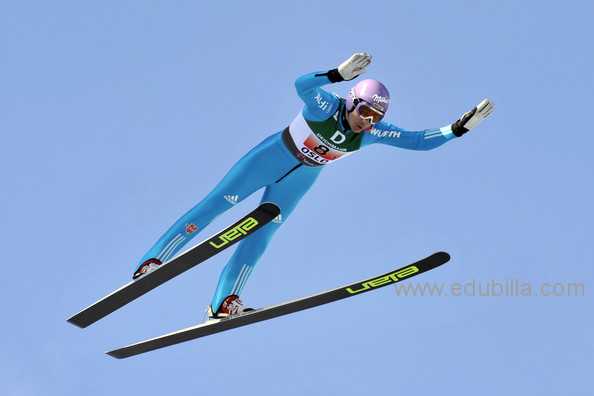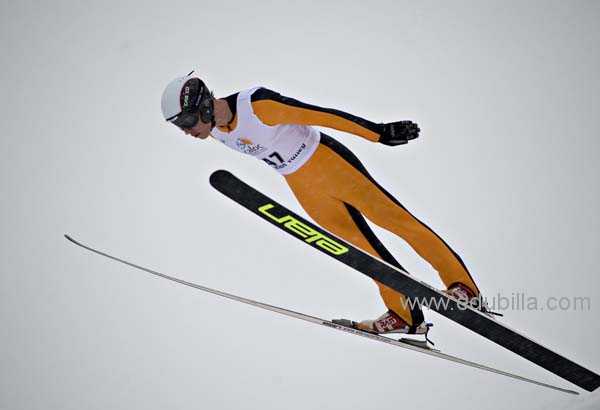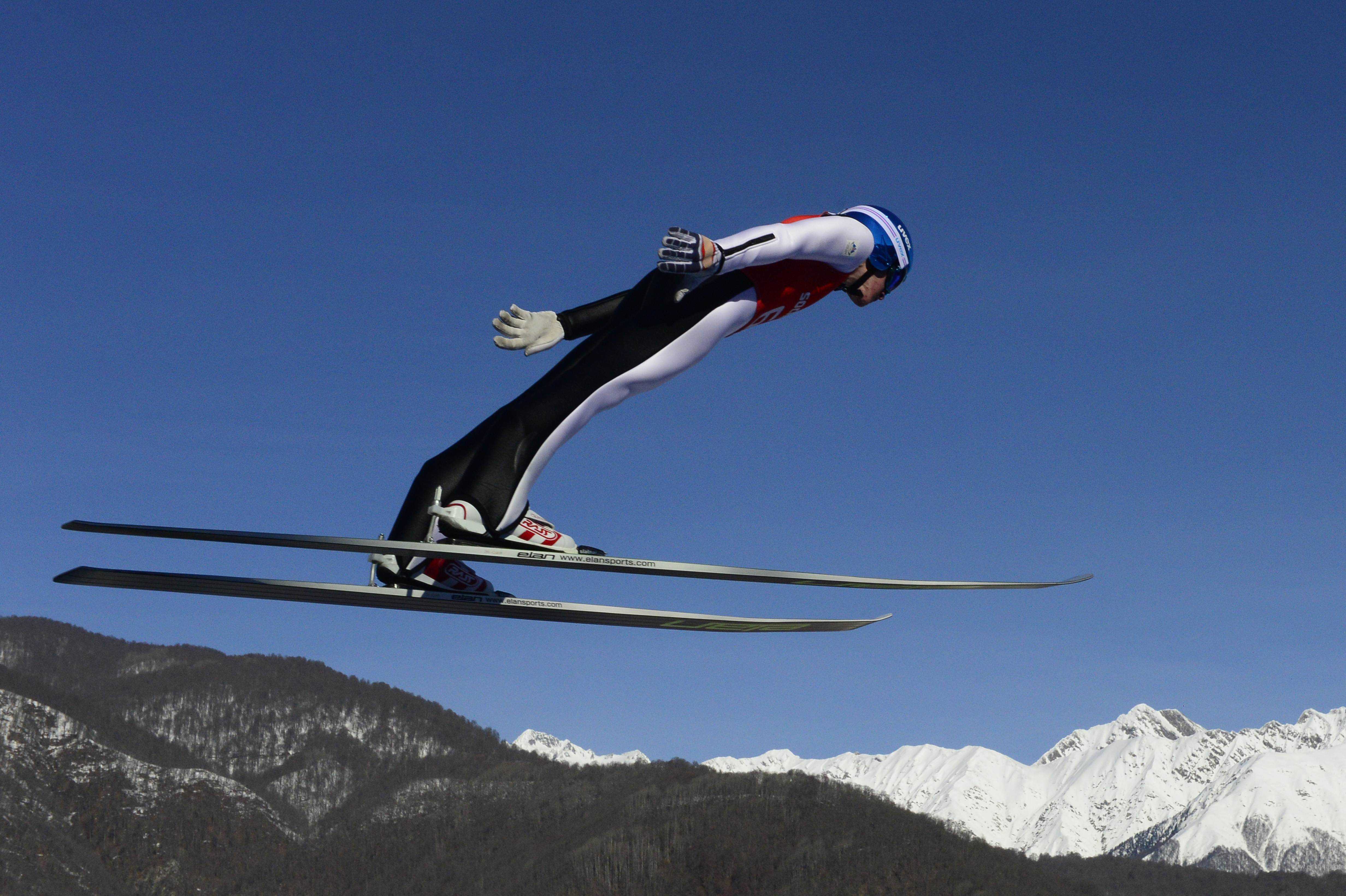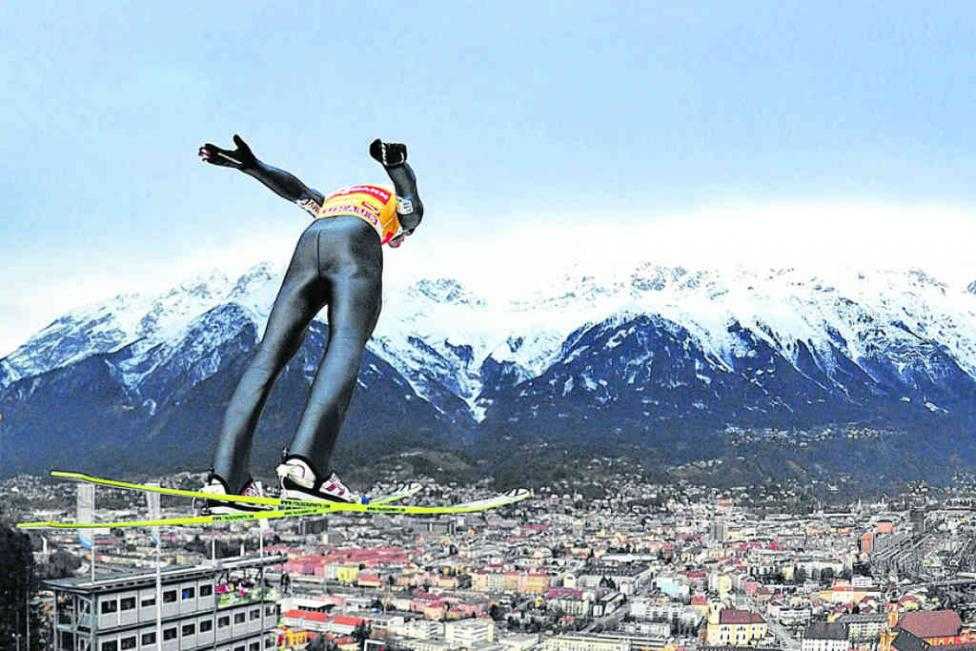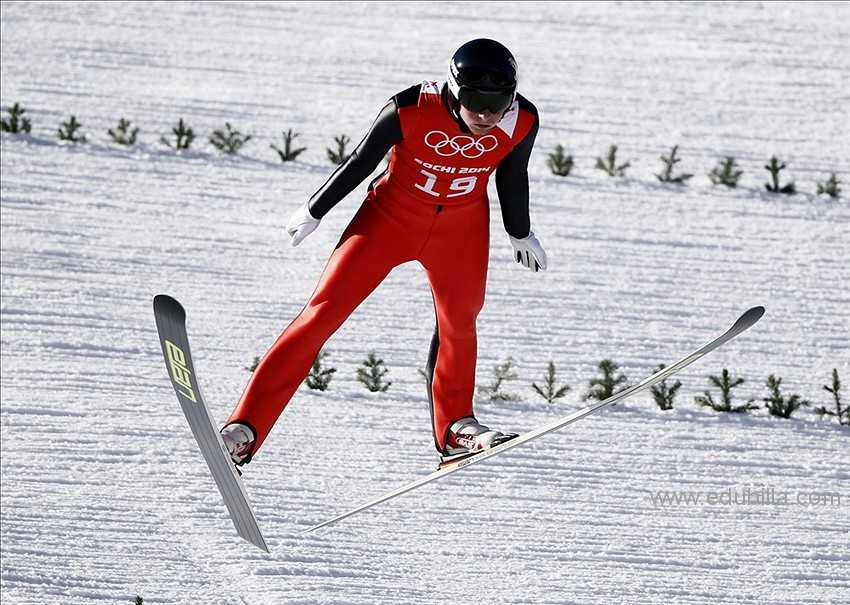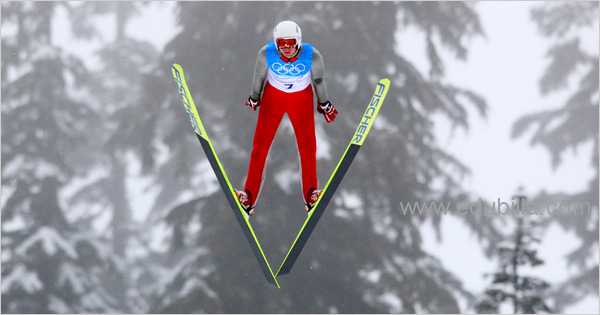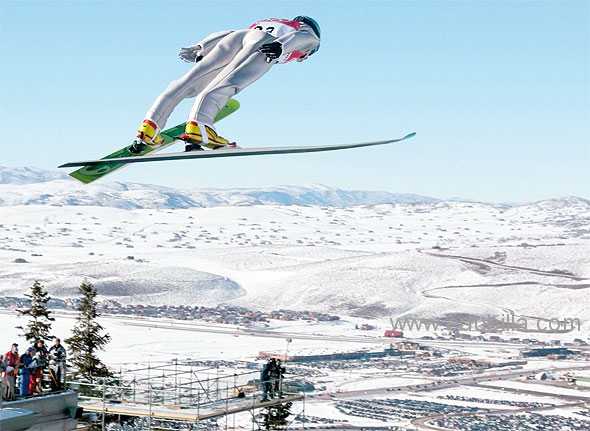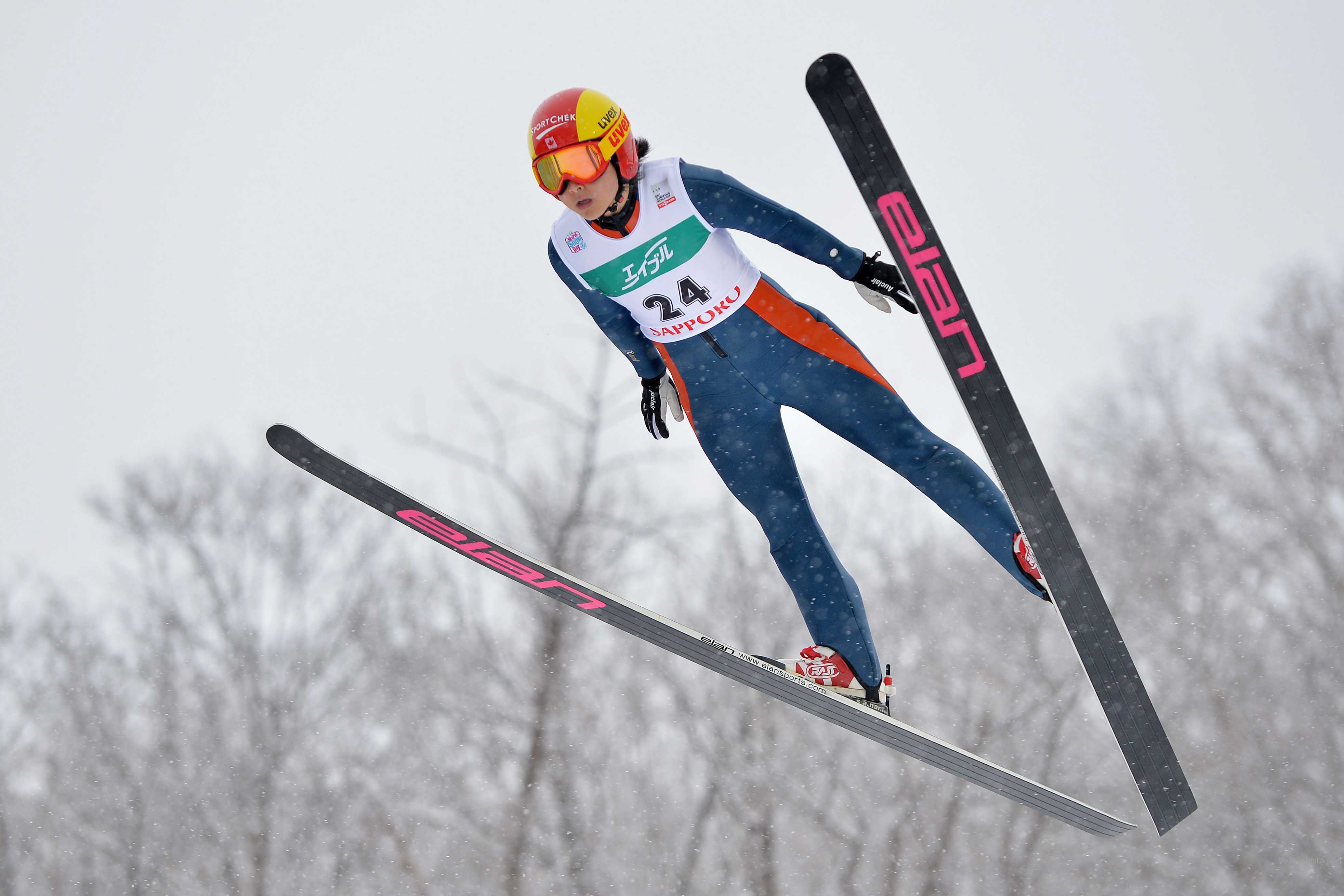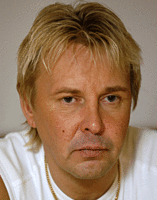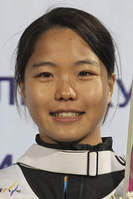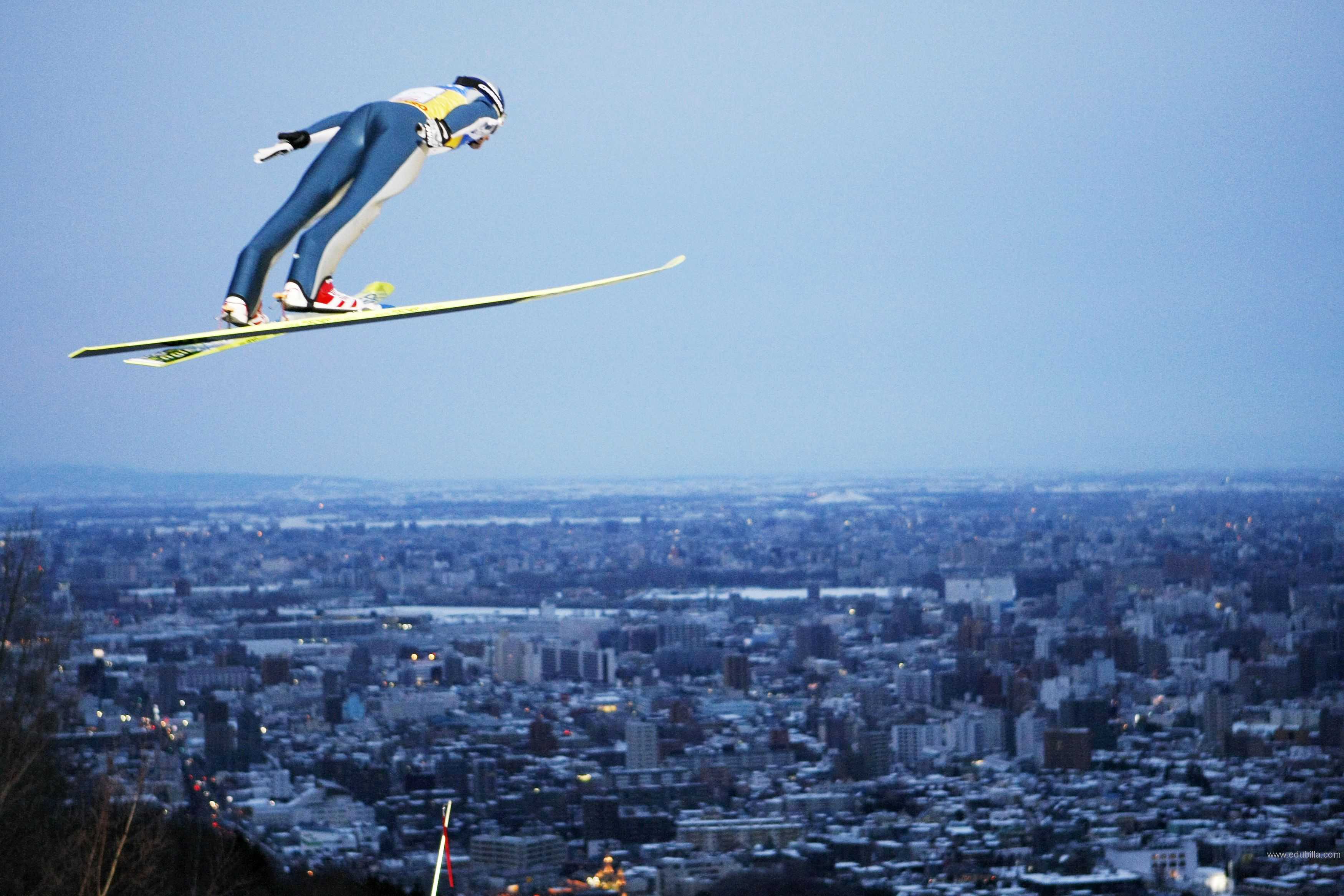
Overview Of Ski jumping
Ski jumping is a form of Nordic skiing in which athletes descend a specially constructed takeoff ramp (known as the inrun), jump from the end of it (the table) with as much power as they can generate, and "fly" as far as possible down a steeply sloped hill. Points are awarded for distance and style by five judges, with competition sanctioned by the International Ski Federation (FIS). To enable the athletes (who are known as ski jumpers) to effectively glide such long distances and land safely, the skis they use are considerably wider and longer than their cross-country and alpine skiing counterparts. Ski jumping is predominantly a winter sport and has been part of the Winter Olympic Games since its inception in 1924, but it can also be performed in the summer on artificial surfaces made from plastic. Along with cross-country skiing, ski jumping is one of two sports which form the Nordic combined discipline.
Competition:
- Normal hill
- Large hill
- Ski flying hill
Ski jumping jumps:
Each athlete attempts two jumps. Landings are videotaped for exact measuring purposes, and points are awarded based on the length of the jump. Longer jumps are awarded more points than shorter ones.
Notable ski jumpers:
- Winners of the FIS Ski Jumping World Cup
- Winners of Olympic Winter Games / Ski Jumping
- Winners of Nordic World Ski Championships / Ski Jumping
- Winners of the Four Hill Jumping
Game Rules
In order to receive the most points, jumpers must land on the K-line - which is set at either 90 or 120 meters. They lose points if they go past or short of this line. Most major individual competitions are made up of two rounds. The first round consists of around 50 jumpers, who get two jumps each. The overall scores are made up of the total score of those two jumps. The top 30 advance to the finals where they get two more jumps. Team competitions usually make up four to a team.
Ski Jumping competition results are based on a total point system which combines style points and distance points.
Style Points:
Style Points. In Olympic and FIS competition each individual jump is divided into three phases - flight, landing, and outrun (outrun is after the landing until stopping). A perfect jump receives a maximum of 20 points.
During the three phases, a set of five judges deduct points based on the theoretical perfect style for each phase.For flight and landing style a judge can deduct no more than 5 points, and for outrun style no more than 7 points can be deducted. Deductions can be in half point increments. The highest and the lowest judged number are discarded, and the three remaining are totaled for a jumper's style point.
Example: Jumper A receives scores of 17; 18; 18.5; 20; 19. Then the 17 (lowest) and the 20 (highest) are eliminated and 18 + 18.5 + 19 = 55.5 total style points.
Distance Points:
Distance Points. In Olympic and FIS competition there are two jumping hills - the large hill and the normal hill. The size of each hill is related to an arbitrary K-point (or spot) on the hill. A large hill has a K point over 100 meters and a normal hill has a K point of 75 - 99 meters. A 120 meter (large hill) jumping competition has a K point of 120 meters, while a 90 meter (normal hill) jumping competition has a K point of 90 meters.
In each competition, a jumper receives 60 distance points if he reaches the K spot. Points are either added for exceeding the K point or deducted for not reaching it.In the large hill competition, every meter over or under the K point adds or subtracts 1.8 distance points, on the normal hill the factor is 2 distance points. Measurement of the individual jump distance is from edge of the take-off ramp to forward point of the jumper's landing, measured to the half meter.
Example: Jumper A lands at 125 meters on the large hill in the 120 Meter Competition. He receives 60 points for reaching the K point (120 meters) and 1.8 points x the 5 meters he exceeded the K point for a total of 69 distance points. For the 120 Meter Jump Competition Jumper A has a score of 124.5 (55.5 style points and 69 distance points).
Competition Events:
Competition Events. There are three events in the Olympic ski jumping. For men, the Individual normal hill and large hill jump competitions each have two rounds of jumping. The jumper in each event with the highest total score (scores of 2 jumps added together) is the winner.
The Team event is held on the large hill. There are four members on each team. There are two rounds of jumps with all teams in the first round and the eight highest scoring teams in the second or medal round. The team with the highest combined score is the winner.
Starting with the 2014 Sochi Winter Olympics, there is one event for women - normal hill competition.
Detailed Ski jumping Rules Can Be Downloaded From Documents
Equipments Need For Ski jumping
Bindings:
The binding must be mounted parallel to the run-direction.The binding must be placed in such a way that maximum 57% of the entire ski length is used as the front part.
Boots:
High-backed, flexible yet firm boots with a low cut at the front. They are designed to allow the skier to lean forward during flight.
Connection cord:
Part of the binding; a cord that attaches the ski to the boot and prevents the wobbling of skis during flight.
Ski Jumping suit:
All portions of the ski jumping suit must be made of the same material and must show a certain air permeability and have a certain thickness as a maximum. The size of the suit must conform to the body shape in an upright position with certain tolerances.
Jumping skis:
Jumping skis are manufactured especially for use on ski jumping hills. Skis with a length of maximum 146% of the total body height of the competitor can be used. The curvature and shape of the skis is restricted by certain geometric features. The jumpers need a defined body weight to be allowed to jump the maximum ski length.
History Of Ski jumping
Over the past hundred years, ski jumping has evolved enormously with different jumping techniques allowing jumpers to achieve ever greater distances.
Beginnings in Norway:
The origin of ski jumping can be traced to Ole Rye who jumped 9.5m in 1808. Norwegian Sondre Norheim is widely considered the father of modern ski jumping. In 1866 he won what has been described as the world’s first ski jumping competition with prizes, held at Ofte, Høydalsmo, Norway.
Further improvements:
In the mid-1950s, Swiss jumper Andreas Daescher became the first jumper to hold the arms backwards close to the body with a more extreme forward lean. Then in 1985, Swedish jumper Jan Bokloev started spreading the tips of his skis into a “V” shape. Initially ridiculed, this technique proved so successful that by 1992 all Olympic medallists were using this style.
Ladies Ski jumping:
The history of ladies ski jumping is as old as the time when women went skiing for the first time. As for the men, for the women Norway is the origin country of ski jumping, too. Already in 1862 there should have been first attempts by Norwegian Ingrid Vestby in Trysil. In 1897 there were reports about 10 year old Ragna Pettersen who should have jumped 12 meters on Mesterbakken in Nydalen. At the end of the 19th century the town of Asker not far from Oslo became famous for a few ladies competitions.
World War I:
After World War I mademoiselle Engelbrecht from Munich became famous as a ski jumping Amazon and in 1927 Olga Balsted Eggen jumped 22 meters in Norway! From 1930 onwards the two ladies Hilda Braskerud and Johanne Kolstad from Dokka in Norway caught headlines by even winning junior competitions with male participants. During the annual competition on Midtstubakken in Oslo in 1931 they started non-competitive in front of an attendance of 9,000 spectators and were afterwards welcomed by crown prince and princess Olav and Märtha on the stands. Since the Norwegian ski association didn't allow official competitions of women, they had to jump betwenn the rounds and gained a very good reputation with their long jumps.
World War II :
After World War II Anne-Lise Hexberg from Nittedal became famous as Norway's best ski jumper in mid 1950's. Afterwards the attempts of women to establish their sports stagnated for many years until Anita Wold from Trondheim came up in 1972 with a jump on 80 meters in Meldal and 97.5 meters in Sapporo in 1976. In 1981 Tiina Lehtola from Finland gathered attention with the first flight of a woman on more then 100 meters.
Origin Of Ski jumping
Ski jumping was born in Norway, the country that has given us practically all of our Nordic skiing events. A popular attraction at ski carnivals in the mid-1800s, the first official ski jumping competition was held in Norway in 1872. Norwegian immigrants brought ski jumping to America just before the turn of the century.
World War I:
After the World War I, an aerodynamic technique known as the Kongsberger Technique was developed by Thulin Thams and Sigmund Rudd, both from Norway. This technique is a style of jumping with the upper body bent at the hips, a wide forward lean, and with arms extended at the front.
Early pioneers:
After World War I, Thulin Thams and Sigmund Ruud developed a new jumping style known as the Kongsberger Technique. This involved jumping with the upper body bent at the hips, a wide forward lean, and with arms extended at the front with the skis parallel to each other. Using this technique Sepp Bradl of Austria became the first to jump more than 100 metres when he jumped 101 metres in 1936.
Ski jumping in Winter Games:
The large hill ski jumping competition has appeared at every Olympic Winter Games since 1924. Although its height has changed through the years, it has been fixed at 120 m (394 ft) since the 1992 Winter Games.The normal hill event was introduced in 1964. Its height was set at 70 m (230 ft) and remained so until 1992, when it was moved up to its current height of 90 m (295 ft).
Governing Bodies
International Ski Federation(FIS):
International Ski Federation is the world highest governing body for international skiing and snowboarding founded in 1924.
It is responsible for the Olympic disciplines of Alpine skiing, Cross-Country skiing, Ski Jumping, Nordic Combined, Freestyle skiing and Snowboarding including setting the international competition rules. The organization now has a membership of 118 national ski associations and is based in Oberhofen am Thunersee, Switzerland.
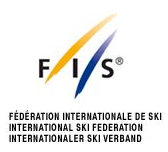
Skiing disciplines:
In one form or other skiing has been a permanent feature on the Olympic Winter Games programme since 1924. The current six disciplines of skiing are alpine, cross country, ski jumping, Nordic combined, freestyle and snowboarding. The first four are rich in history whilst the latter two are relative newcomers growing in popularity. To compete in these various disciplines one needs to master speed, endurance, dexterity, and determination.
Alpine – downhill and super-G:
The alpine competition consists of ten events: five each for women and men. The downhill features the longest course and the highest speeds in alpine skiing. Super-G stands for super giant slalom, an event that combines the speed of downhill with the more precise turns of giant slalom. In these events each skier makes one run down a single course and the fastest time determines the winner.
Alpine – slaloms/super combined:
The slalom is the alpine event with the shortest course and the quickest turns. The giant slalom has fewer turns and wider, smoother turns. In both events, each skier makes two runs down two different courses on the same slope. The times are added and the fastest total time determines the winner. In the so-called super combined event, one shortened downhill run is followed by a one-run slalom. The times are added together and the fastest total time determines the winner.
Cross country:
The cross country competition consists of 12 different cross country skiing events. Women compete in the sprint, team sprint, 10km individual start, 15km pursuit, 30km mass start and the 4x5km relay. Men compete in the sprint, team sprint, 15km individual start, 30km pursuit, 50km mass start and the 4x10km relay.
Ski jumping:
Ski jumping is currently competed by men and there are three events: the individual normal hill, the individual large hill and the team event on the large hill. In the individual events each athlete gets two jumps and the athlete with the highest combined score is the winner. In the team event, each team has four members and the field is reduced to the eight best teams after the first jump.
Nordic combined:
There are three Nordic combined events, each consisting of a ski jumping competition and a cross-country skiing race. For the normal hill Gundersen event, ski jumping takes place on the normal hill (90m). For the team and the large hill Gundersen events, ski jumping takes place on the large hill (120m). The cross country portion of the Gundersen events has a 10km race and the team event has a 4x5km relay.
Snowboarding:
There are six snowboarding events on the programme of the Olympic Winter Games: men’s and women’s halfpipe, men’s and women’s parallel giant slalom, men’s and women’s snowboard cross.
Freestyle skiing:
As of the Vancouver Games, there will be three freestyle skiing events each for women and men on the Olympic programme. In addition to the aerial and mogul competitions, ski cross will make its debut in 2010. The mass start of all four racers sets the stage for fast and exciting competition designed to test the skiers’ skills in turns of a variety of types and sizes, flat sections and traverses, as well as rolls, banks and ridges. The fastest skier wins.
Structure:
The FIS organisational structure has been developed to maximize the ability for FIS to meet its goals as the international governing body for skiing and snowboarding.
The FIS Congress (or General Assembly) elects the 17 member Council (Executive Board) every two years that oversees activities between Congresses. In order to advise the Council, it nominates members to specialist Technical Committees, sub-committees and working groups that serve as advisory bodies.
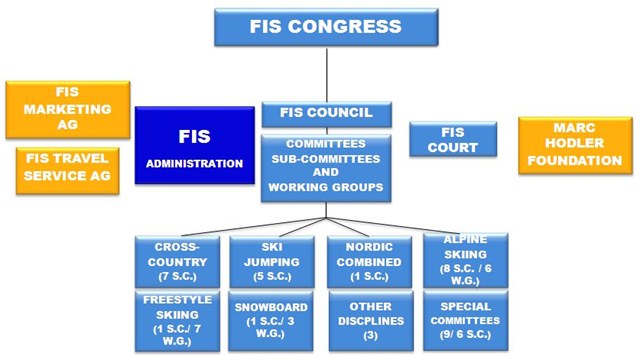
The following diagram depicts the organisational structure of FIS:
To Visit FIS Click Here
Awards Related To Ski jumping
U.S. SKI & SNOWBOARD ASSOCATION AWARDS:
USSA Diamond Award
USSA Gold Awards
USSA Silver Awards
USSA Athlete of the Year Awards
USSA Coach of the Year Awards
USSA Club of the Year Awards
USSA Chairman’s Special Recognition Awards
Order of Polonia Restituta:
The Order of Polonia Restituta (Polish: Order Odrodzenia Polski, English: Order of Rebirth of Poland) is one of Poland's highest Orders. The Order can be conferred for outstanding achievements in the fields of education, science, sport, culture, art, economics, national defense, social work, civil service, or for furthering good relations between countries. It was established on 4 February 1921 and can be awarded to both civilians and soldiers, as well as to foreigners.
Polish Sportspersonality of the Year :
The Polish Sportspersonality of the Year is chosen annually since 1926 by the readers of the newspaper Przegl?d Sportowy. Record holders are track and field athletes Irena Szewi?ska and Stanis?awa Walasiewicz, and ski jumper Adam Ma?ysz - four times each; cross country skier Justyna Kowalczyk is the leader - five times.
-Pele

